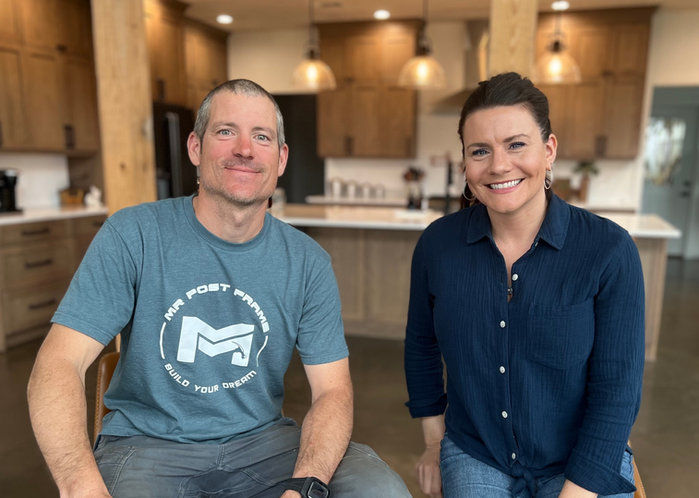Barndominium Concrete Slab | MAD County Standard | Part 8 & 9
- MR Post Frame

- Dec 20, 2023
- 3 min read
Welcome back to MR Post Frame. Today, we'll be discussing topics related to concrete and floor heating in barndominiums. We are working on the MAD County standard project which is a mini version of our own personal home. Both of the plans for these builds are on our website for purchase.

We first go in with our 6 mm vapor barrier and lay that out across the entire area of the barndominium. This prepares us for insulation and then the flooring. All the seams need to be taped to ensure nothing can get through. On top of that we go in with our 2 inch thick insulation all across the barndominium. Both the vapor barrier and the insulation might need to be altered or cut to go around different obstacles such as piping.

We are ready to begin working on running all the radiant tubing. We're using half-inch oxygen barrier pipes in 300-foot loops, bringing them back to the manifold. Our method involves using one-inch electric conduit long sweeps to protect the tubing through the concrete. We then fill in with spray foam insulation, maintaining a one-foot spacing using the Malco PEX stapler. We start 6 inches from the wall and then 12 inch on center from there. If you're planning to pour a concrete floor in your home, at the very least, you'll need a vapor barrier and insulation. Adding PEX tubing comes at an additional cost of about $1.50 per square foot. In my opinion, it's a worthwhile investment. You can always incorporate more advanced controls later on.
We need to make sure our tubes are nice and straight, ensuring even heat distribution. Fiberglass rebar is placed over the top for reinforcement. All these loops run back to where our utility room will be. Depending on its position, if it's on an inside wall, supporting it requires using one-inch electrical conduits to run the tubing up through, protecting it during the concrete pour. Once the concrete is set, the protective board is removed.

This is a two-zone system – the house on one side, and the garage on the other. We need to connect all these loops to pressurize the system. I have a set of crimped-together T's forming the manifold. The end one has a 90-degree bend as the first connection, and the end has a T for pressurization. I use a simple device with a pressure gauge, ball valve, and air hose hookup to pressurize the system.
I've attached a longer loop to monitor from outside the building, preventing interference with the concrete work. After securing it, we'll use the air compressor to pressurize the system. The ball valve allows us to control the air flow, and we'll monitor the pressure over the next couple of hours.

Now, let's discuss the finishing touches. We use polystyrene to create a thermal break, ensuring insulation from top to bottom. Interior girts will be added to connect columns, and spray foam will fill gaps for complete insulation. Around the columns, we follow a specific process to allow for proper insulation without hindering the footing.
We have a drain for a custom shower, sloped for proper drainage. In the utility room, PEX lines are neatly organized, and the boardings will be removed after the concrete pour. All water lines are protected with spray foam. The PVC pipes for water lines ensure they're never in direct contact with the concrete. We'll use spray foam to protect them.
Thank you,
MR Post Frame

Patreon Group:
Interested in tackling your build on your own? If you want to explore the possibility of being your GC or self-building, our Patreon membership is for you! It's a community of like-minded people offering support, discounts, Q/A, and more.







Comments